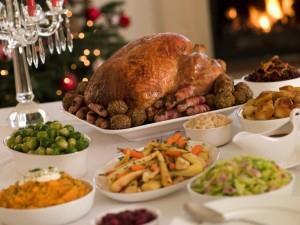Meat Management talked to a number of industry experts to find out how the 2015 festive season fared, and whether turkey is still the nation’s number one when it comes to Christmas dinner.

Retailers and butchers reported a surge in the sales of ‘non-traditional’ meats this festive season.
Sainsbury's said venison sales were up 115 per cent compared to the same time in 2014, while Tesco stated that the demand for guinea fowl, duck and goose had also grown.
Supermarkets also reported that adventurous shoppers were searching for exciting alternatives to turkey, like veal and venison.
Goose was a successfully selling festive table centre piece for Lidl; the supermarket saw sales of free range goose almost doubling.
Richard Bourns, head of buying at Lidl, said: “There was increased focus on offering a broad range of high quality premium alternatives to traditional favourites. These included a 28 day matured dry aged British beef sirloin joint, an easy carve west country lamb leg with Darjeeling tea rub and British corn fed free range chicken.”
Fresh British turkey still led the way at Lidl though, with a 61 per cent year on year increase alongside a 72 per cent increase year on year in free-range, and it may not come as a surprise that turkey overall is still ruling the roost.
Gordon Newlands from the Q Guild revealed that boneless turkey joints were up 30 per cent in the run up to Christmas, and turkey crown sales also increased.
He added: “Sales [of Q Guild members] were up from 20 per cent to 37 per cent over all, and there was buoyant trade from all members.”
Independent butcher John Harding of Owton’s Farm Shops in Southampton confirmed that turkey sales had gone up, especially for free range products.
He said: “Our sale of free range bronze turkeys has increased… we have kept our prices low to encourage more sales, and we did sell more birds in total.”
Danny Lidgate of Lidgates, London, also confirmed a rise in some sales. He said: “We found good turkey sales, up on last year, and beef increased, and geese increased too. If anything I think people preferred whole birds and not boneless joints.”
A representative of the International Meat Trade Organisation expressed that there have been a diversity of views as to whether meat sales were better overall than in 2014. They said a wide divergence between cost conscious purchasing and what is served in elite restaurants proves the diversity of the meat market, creating difficulties in pinning down specific observations.
Yet it would seem independent traders and butchers proved successful with “long lines of customers waiting to collect their produce” (Q Guild) – in fact, all Q Guild members’ sales were up from 2014.
This story was originally published on a previous version of the Meat Management website and so there may be some missing images and formatting issues.















